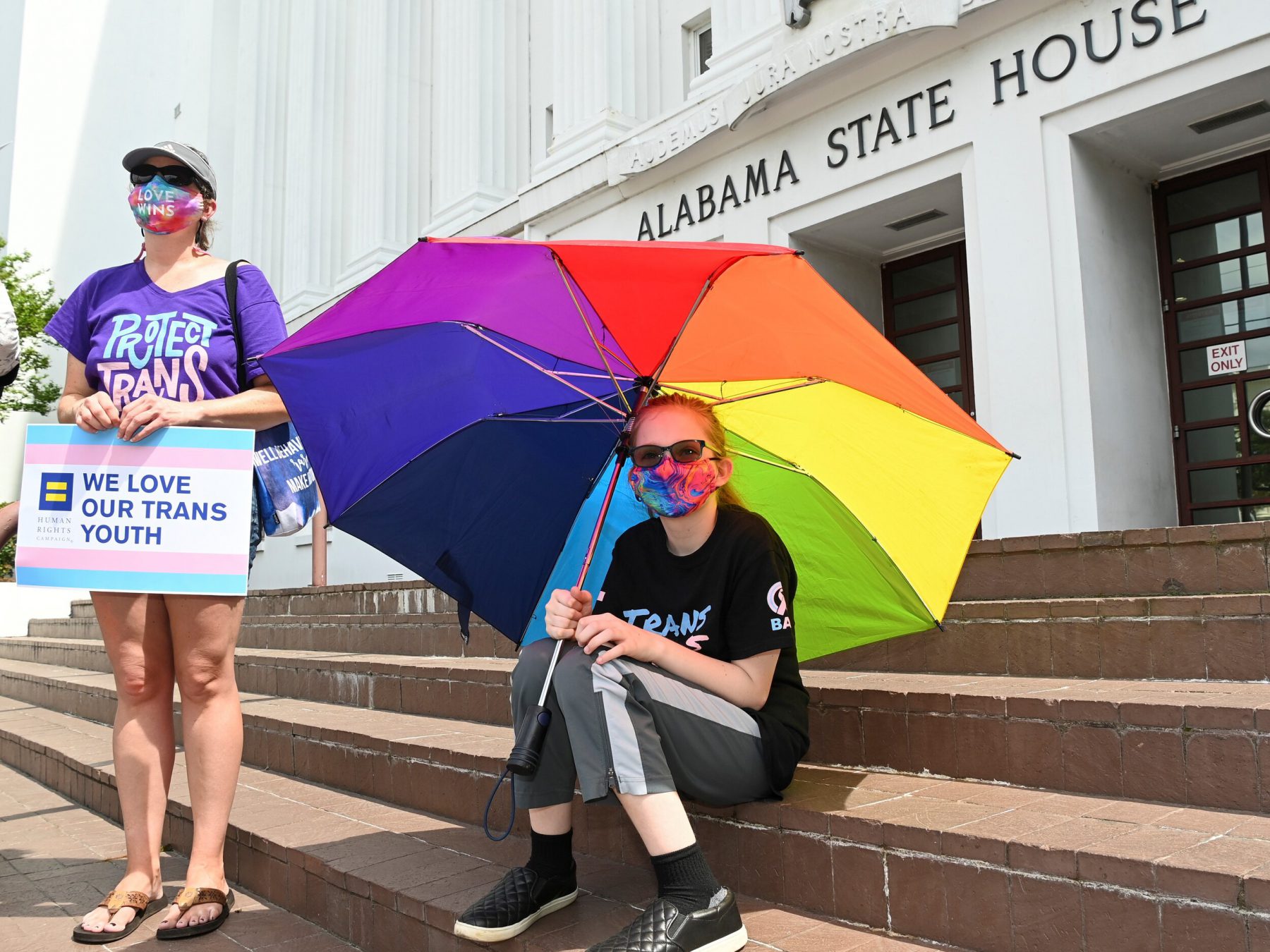
As the 2021 legislative session draws to a close in states across the country, many states are trying to roll back the rights of transgender Americans, specifically children.
This year, according to the Human Rights Campaign, 10 states have signed into law and 31 states have introduced bills to prevent trans high schoolers from playing on sports teams that match their gender identity, stop doctors from prescribing trans-affirming health care to children and prevent trans people from using bathrooms at schools and businesses that match their gender identity.
More pieces of anti-trans legislation have been passed this year than in the past 10 years combined, according to Chase Strangio, the ACLU’s deputy director of transgender justice. The speed at which these bills appeared suggests they were part of a coordinated movement, and highlights the real danger that trans Americans now face. Without health care, the right to play with your peers in school, or go to the bathroom in public, it’s virtually impossible to exist as a young trans person.
When laid out in stark terms like this, it’s clear that it’s been a hard year for trans people fighting against these bills and seeing their community attacked by politicians.
But this isn’t how it’s being covered by many large, national publications, where a different narrative has emerged — one of a “culture war.”
For instance, the New York Times ran a piece in March, “Why Transgender Girls Are Suddenly the G.O.P.’s Culture-War Focus.” This implies that the fights in state houses across the country are purely a cultural issue, rather than the continuation of a long battle by right-wing and religious groups to limit the rights of trans Americans. Similarly, NPR ran a story in May tying these bills to earlier religious freedom efforts, “How Anti-Trans Bills Evoke the Culture Wars of the 90s.”
Framing legislation that seeks to exclude trans people from having equal rights as a culture war reduces the trans community to a political football in an abstract policy debate. No longer is this an issue about access to life-saving health care; legislation that focuses on trans Americans is a “wedge issue” that reflects America’s polarization.
Relegating legislation preventing trans people from being able to take part in the public sphere to a culture war issue is just one way the media downplays what’s happening through a cisgender lens.
Many outlets don’t even include trans voices in pieces about the rights of trans people. It doesn’t help that many newsrooms don’t have any trans reporters on staff, and many LGBTQ advocacy organizations don’t have trans spokespeople. This limits the pool of trans people that can speak as “experts” on their own community for reporters.
One blatant example of this can be seen in coverage of hearings on the Equality Act, which would give the trans community non-discrimination protections that are absent across the country. Only 22 states in the country offer broad non-discrimination protection for trans people based on gender identity — something the Equality Act would fix.
Most mainstream news organizations such the New York Times, Washington Post, NBC News, CNN, CBS News and the Hill quoted cisgender LGBTQ advocates in their coverage, or lawmakers and advocates attacking the transgender community. Stories even quoted lawmakers intentionally misgendering trans Americans and boosting theories that demonize the community, including the idea that letting trans high schoolers play sports would destroy women’s sports.
For instance, Senator John Kennedy, R-La., is quoted calling trans high school girls seeking to play extracurricular activities “a boy who identifies as a girl” without any context about how his statement misgenders trans teenagers. By not qualifying the statement, it leaves the senator’s words as part of what anti-trans activists believe is a debate, rather than acknowledging a trans person’s identity.
Building sources as a journalist requires trust. But there’s a lot of distrust in the trans community right now, which has been built on decades of politicians trying to strip their rights away. This means that trans voices often get left out, even if it’s not intentional.
I recently chatted with Kam Burns, an engagement editor at Politico and a founder of the Trans Journalist Association. When asked why it’s important for the media to let trans people cover their own community, he said we have more nuance in understanding our own struggles that we bring to coverage, which can stop reductive narratives and lazy journalism.
“You skip past the basics of what words like ‘trans’ or ‘nonbinary’ mean,” he said. “This leaves room to get into more nuanced and thoughtful stories.”
Many editors have taken note and have started reaching out to trans reporters to cover the wave of anti-trans laws. As a trans journalist covering these developments, I’ve made sure that I highlighted the voices of trans people affected by this legislation because they were the ones whose lives would be altered by decisions taken in their state capitals. Journalists are supposed to report the news, but also show how the news affects people to inform the population of what is going on.
Other trans reporters have done the same, making sure to emphasize these voices and seek out new people that get left out of mainstream publications.
I would be lying if I said my mental health hasn’t suffered over the last six months because of it. Covering these bills has exposed me to the trauma of others at a time when many reporters are sequestered at home due to the pandemic. But these are stories that have to be told, and I take pride in doing my best to tell them and don’t want to stop any time soon. Groups like the TJA give me hope that newsrooms will have a resource to get better at covering trans stories and bringing our wide range of experiences to light.



